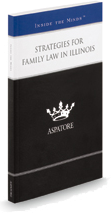Deciding to seek a divorce can be a challenge. Whether you’ve been married for two or twenty years, there are a lot of factors to consider. Divorce can drastically affect your finances, your relationship with friends and family, and the way your day-to-day life operates. How complicated a divorce can become depends on a variety of factors, such as shared assets, children, and the length of the marriage.
This is why a gray divorce can be challenging in Tulsa, OK. If you are seeking a divorce later in life, it is beneficial to understand the unique challenges you may face. Finding an experienced attorney who understands the complex process of a divorce taking place later in life can make the process much easier.
What Is a Gray Divorce?
While not the most flattering term, gray divorce refers to a divorce that takes place for people over 50. Though it may seem like a divorce follows the same process regardless of age, there are different considerations to consider for people divorcing later in life. Though the stigma of divorce is mostly gone, divorces from long-lasting marriages mean a lifetime of assets and emotions to untangle. Retirement pensions, shared property, and managing any care of older or adult children add to the complication of gray divorce.
Are Gray Divorces Common?
In Tulsa, OK, gray divorces are becoming increasingly more common. This is largely due to the greater acceptability of divorce, which means less stigma in choosing to do so. Historically, divorce was so heavily stigmatized that in some places, it was completely illegal or involved strict restrictions that required proof to be approved in a court of law.
Today, a divorce may still be complicated, but a person can’t be stopped from pursuing it, regardless of circumstances. While divorce may have once been associated with feelings of failure, today, it isn’t uncommon to find yourself invited to a divorce party. This rise in social acceptance has led those seeking divorce later in life to feel more comfortable doing so.
For those who are unhappy in their marriage, realizing how much life is still left to be lived has led them to the decision to pursue a divorce later in life. Gray divorce is also more common today due to the increase in life expectancy. For many individuals, their 50s are a far cry from being marked by slowing down.
Factors That Can Lead to a Gray Divorce
Divorce is a complicated decision that often involves more than one reason. While many of the same reasons for a gray divorce can apply to a divorce of any kind, there are specific factors that can lead a couple in their later years to pursue a divorce. These reasons include:
- Finances. Finances can affect any marriage. In a gray divorce, there is often added pressure for financial stability due to those who are phasing out of the workforce. As a couple nears retirement, it can be difficult to make up for poor financial decisions. Resentment is also common if one spouse worked more and feels a stronger claim to the estate and money.
- Life changes. As we age, our friend circle naturally gets smaller. Our physical ability to do the activities we once enjoyed changes as well. If one partner goes in an opposite direction than the other, it can be better for each if they live separately and pursue separate ambitions.
- Independence. The cultural attitudes towards women’s roles have dramatically changed. Women can lead successful careers and maintain financial independence. This ability, and the confidence it provides, allows women to seek a happier life, even if that means divorce from a long-time spouse. However, it’s important to note that gray divorces often affect women the most; those who have stayed at home to raise children might not have the retirement or savings opportunity as their spouse. These roles are changing, but those involved in today’s gray divorces are still likely affected by the past.
- Empty nest. Children can fill up your life, demanding your focus and attention. Once children grow up and leave the home, many spouses realize they don’t share the same common ground. Without that familial connection, some people find that they don’t have much in common with their spouse.
- Retirement. While retirement is a reward for all your hard work throughout life, it can be hard to adjust. It can cause tension in the home, either through the inability to fill the time or disagreements on how to spend your retirement years.
The Divorce Process
The process itself doesn’t change drastically merely because you are seeking a divorce later in life. However, you will most likely be dealing with shared assets and finances that are more complex. This is why it is so important to have an experienced attorney on your side to ensure your shared assets, property, and finances are divided appropriately. This can include a greater focus on:
- Retirement accounts and pensions. We start to build retirement accounts early in life to ensure security when we are older. These accounts can take a major hit when involved in a gray divorce. Retirement can be the largest asset involved in a gray divorce.
- Having to pay alimony can lead to financial strain. The length of the marriage is often a factor, so as an older couple, a spouse could be paying alimony for years to come.
- Separating long-term assets. It can be complicated to separate assets and property that have been shared for years. This may include a home that has been shared for 15+ years. This can also be emotionally draining for the parties involved. When emotions are high, tensions can build, which can draw out the divorce process.
Pursuing a divorce at any age isn’t easy. Gray divorce may prove to be a bit more complicated, but with experienced representation, you’ll have a better chance of achieving an outcome that you find satisfactory. No matter your age or length of the marriage, you deserve to live out your life as happily as possible. If you are pursuing a gray divorce, the professionals at Stange Law Firm can help. With years of experience in family law, you can feel confident that you are receiving the best representation possible. Contact us to learn how we can help.



